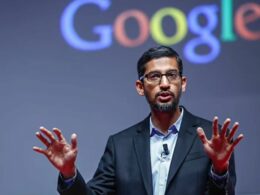Millions of Indians apply for jobs every day. And millions anxiously await that interview call which often never comes.
Understandably, there’re several reasons why your application is unsuccessful. However, a major reason could be that you’ve sent the wrong document along with your application letter.
What’s this document? It could be your CV, Resume or Bio-Data.
Most Indians remain blissfully unaware about the vast difference between a CV, Resume & Bio-Data. Consequently, they send the wrong document. And the result: their applications land in the nearest trashcan or meet the document shredder.
Why CV, Resume & Bio-Data Matters?

You might wonder why would an employer throw away your application despite your qualifications and skills matching the job perfectly?
Because employers specifically ask for a cv, Resume or Bio-Data depending upon their Human Resources policies, nature of job and information they want from an applicant such as yourself.
Furthermore, sending the wrong document directly implies that you’re unaware about the difference between a CV, Resume and Bio-Data. This reflects very poorly when you’re applying for that dream job in that wonderful organisation.
Therefore, I’ll explain the difference between a CV, Resume & Bio-Data.
Difference Between a CV, Resume & Bio-Data
When you’re applying for a job, check the type of document that an employer is requesting. This will be clear from their advertisement in newspapers, notices and online.
By sending the right document, you’re actually helping the employer to assess your capabilities for the job. This could result in a call for interview.
Therefore, here’re the main differences.
1. Bio-Data
The term ‘Bio-Data’ is a short form of Biographical Data.
A Bio-Data is useful only while applying for jobs at small companies in India. And sometimes, for government grants or temporary positions, school admissions and other similar purposes.
Here’s something important: Bio-Data is used only in India. It’s a vestige of the colonial era and a rather archaic form of providing information about yourself.
Never use a Bio-Data while applying for jobs at large corporations, Multinational Companies (MNCs), jobs outside India and specialized positions.
What’s a Bio-Data? Here we go.
>>First Part of Bio-Data
A typical Bio-Data starts with your full name. It is written in the reverse order. Meaning, your surname or family name comes at the beginning. This is followed by your first and middle name.
The next element on a Bio-Data is your residential or present address and contact details such as phone number and email ID.
Furthermore, you will also have to include a permanent address if it’s different from the present or residential address.
>>Second Part of Bio-Data
The next feature of your Bio-Data is your gender. You’ve to specify whether you’re female or male. Due to amendments in Indian laws, it’s also possible for transgender people to state so openly.
Next on your Bio-Data comes your date of birth. This is written in the typical DD-MM-YYYY format. Meaning, there’re no shortcuts.
Other elements that form part of a Bio-Data are your religion and details about your caste or tribe. This section is optional since religion, caste and tribe matter only while applying for government grants and positions.
You can mention these if you’re looking for jobs at an organization that specifically deals with any particular section of the Indian society.
>>Third Part of Bio-Data
Upon providing these details, you move on to your academic qualifications. These are written in detail and in chronological order.
You start by mentioning the schools you attended with the duration and final qualifications such as Secondary School Certificate of Higher Secondary Certificate.
And finally you mention the college or university from where you got a graduation degree. Remember to include your scores in every major exam such as SSC, HSC and degree.
You’ve to clearly mention the month and year during which you were studying at any particular educational institute. And you can also mention the location of the school and college such as the village, city or town.
>>Fourth Part of Bio-Data
The fourth and most important part of a Bio-Data deals with your work experience. This is also written in a chronological order. Start by mentioning your first job, write about every job you held with details of employer, date of joining and leaving service and positions held.
Your current or last employer features at the end of the fourth part of your Bio-Data. However, you needn’t disclose the name of your current or last employer.
>>More Details on Bio-Data
After completing the fourth part, you can add other sections on your Bio-Data. They include your language skills along with proficiency levels. You can list all the languages you can read, write and speak and indicate your level of fluency too.
Some jobseekers also include details about extracurricular activities and mention awards they’ve won over the years.
Always remember to self-attest your Bio-Data by adding a line declaring the given information to be true and verifiable to the best of your knowledge. You’ll sign at the bottom of a Bio-Data.
Understandably, you won’t be able to sign a Bio-Data that’s sent by email. That’s acceptable as long as you’ll add the sentence stating the information you’re giving is true to the best of your knowledge and type your full name.
2. Resume
The second type of document that employers ask from jobseekers is the Resume. Actually, the term Resume traces its origin from the French language.
The term Resume stands for brief introduction about yourself. That includes concise yet accurate information about your educational qualifications and skills that’re relevant for a job.
A Resume is written in the chronological order and as a third person. Meaning, you’ll be introducing yourself as you would introduce another person.
Resume is useful for fresh graduates, those hopping jobs for the first time as well as graduates from Arts, Commerce and Science streams that don’t have specialized skills.
How to write an excellent Resume? Here’re the tips.
1. First Part of Resume
The first part of a Resume begins by introducing yourself beginning with your name. You can also include your approximate age and place where you reside currently but not your contact details or address.
A good Resume usually begins like this: “ABC introduces herself/ himself as a 00-year old PQR professional with 000 years of experience in the PQR industry.”
This gives a clear indication to the prospective employer about your skills and experience to gauge your eligibility for the job.
2. Second Part of Resume
The second part of your Resume deals with academic or educational qualifications. These are written in third party and chronological order.
Meaning, you’ll start by saying which school you began education, years of attendance and year in which you pass the SSC or HSC exams. There’s no need to include your marks or other details here.
Next comes your graduation or professional degree. Mention the college or university and the duration of study, ending with the degree you got.
An excellent resume should list education in not more than three paragraphs of two to three sentences each.
For example: “ABC began studying at LMN School from DDMMYY and successfully completed SSC/ HSC in DDMMYY.”
“Later, ABC enrolled for RST degree at DEF college/ university in DDMMYY. He/ She graduated in MMYY with UVW in MMYY.”
3. Third Part of Resume
The third part of an excellent Resume deals with your work experience. This is also written in third party, chronological order.
“Upon graduation, ABC began working as ZZZZ at OOOO company as HHHH. Work responsibilities included ABCDEF.”
“Later, ABC worked as JJJJ at KKKK company as RRRR. Work responsibilities included UUUU.”
Here, it’s important to emphasize on your designations and responsibilities very briefly.
4. Fourth Part of Resume
Usually, the fourth part of a Resume isn’t that important. However, you can leverage your membership of any professional clubs, organizations, guilds by mentioning them in a couple of sentences. Example: “ABC is a member of GGG organization since MMYY.”
Providing this information isn’t really necessary. However, a sentence or two does tend to impress the person that reads your curriculum vitae and improves chances of getting that call for interview.
5. Self-Attestation of Resume
Like every document, self- attesting a resume by adding a sentence stating the information is correct to the best of your knowledge will prove helpful.
Remember, a good Resume is not more than two A-4 size pages. Never include your picture on a Resume unless an employer is asking for one.
3. Curriculum Vitae
The Curriculum Vitae is the single most important document that can open doors to that wonderful job and help you build that dream career. Because employers usually ask for CV only when they’re looking for a specific and specialized skill.
Therefore, the focus of a curriculum vitae is usually on your work skills and lesser on your educational qualifications. An employer wants to know what skills you possess that would be useful to their business.
CVs are especially important when you’re looking for higher designations at any major organization, including foreign jobs.
Since a curriculum vitae focuses more on skills and experience, it is written in a sharp, precise and reverse chronological order.
Your name goes on left hand top corner of the curriculum vitae.
1. First Part of CV
The first part of a CV starts with your work experience only. You’ve to list your work experience and skills starting from your current or last employer.
It isn’t necessary to disclose your current employer if you’re already working elsewhere. The interviewer will anyways ask you the question during an interview.
After you mention your current or last employer, go backwards and write your complete history of employment.
Remember, details about your first job come last.
While writing your curriculum vitae, the main focus should be on your skills and designations as well as achievements such as successful projects at work.
2. Second Part of CV
The second part of CV consists of your educational qualifications. These too are written in the reverse chronological order. Meaning, you’ll write about the university or college degree you hold at the beginning.
Here it’s not important to mention your scores on a curriculum vitae. However, there’s no harm in doing that, if you have very high and outstanding scores.
After your last degree, go on to list your junior college and school from where you did your HSC and SSC or their equivalent.
If you’ve changed schools or colleges, mention them very briefly and state reasons for the switchover.
3. Third Part of CV
There’re no third parts of a CV. However, you can create one if you’re the member of any professional club, organization or guild.
That adds credibility to your work experience and qualifications. But don’t mention sports clubs, alumni associations and political affiliations.
Remember, a CV is strictly for assessing your skills for the job while your education and other elements take a backseat.
4. Self-Attestation of CV
As usual, it’s excellent etiquette to self-attest your curriculum vitae by stating the information is true to the best of your knowledge.
This speaks about your confidence and imparts a goodwill among employers. However, it’s extremely important to be truthful about every single detail you mention on your Bio-Data, Resume and curriculum vitae.
What About Career Objective?
There’s one more thing a lot of people include on their CV, Resume and Bio-Data. And that’s Career Objective. Actually a Career Objective is a brief and personal vision and mission statement.
A Career Objective outlines your career goals and how you wish to achieve them. It’s written to create an excellent impression upon the person that reads your application.
Currently, there’s a huge debate over the use of Career Objective on CV, Resume and Bio-Data. That’s because a large number of HR officials believe a Career Objectives are written vaguely and hence, useless.
Whether or not to include a Career Objective is purely your choice. But if you do write a Career Objective, make it a professional one that conveys what you’re looking for rather than one to impress an interviewer or HR official.
References on CV, Resume, Bio-Data
Yet another common practice in India is to include references on a job application. Again, this is an outdated practice. HR officials and employers are well aware that references and reference letters are easily available.
We live in an era where companies have easy access to Employee Background Screening or Pre-Employment Checks and similar facilities. Such checks invariably expose any loopholes and false claims made on a curriculum vitae, Resume and Bio-Data.
Therefore, I would recommend submitting references only if an employer or organization explicitly requests for them.
And if you have to provide references, ensure they’re from someone related to your profession rather than some vague entity, celebrity or political figure.
Mentioning Salary or Expected Pay
Sometimes, an employer may ask jobseekers to specifically state how much remuneration they expect from the company. This is a rather tricky question to answer.
Because quoting a smaller pay to grab the job might prove you’re available for cheap and there’s no takers for your skills and qualifications.
Asking for exorbitantly higher pay can attract an employer. However, you’ll require adequate skills to prove that your work would justify the remuneration.
Therefore, the best way to quote a salary or expected Cost-To-Company (CTC) would be by reading reviews on excellent job portals. Remember, your remuneration in terms of salary and perks is far too different from CTC.
If in doubt about how much pay to seek, refer to excellent websites such as Payscale, Indeed, Glassdoor and LinkedIn. Here you’ll get an approximate estimate of how much your skills are worth.
Closing Thoughts
Before concluding, I’ll alert you that a curriculum vitae, Resume or Bio-Data is your first contact with a prospective employer. It will create an impression on the person that reads it.
Therefore, never rush to create these documents. Instead, write them carefully and weigh your words before penning them.





